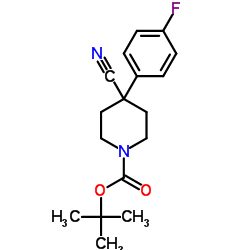55-86-7
| Name | mechlorethamine hydrochloride |
|---|---|
| Synonyms |
Ethanamine, 2-chloro-N- (2-chloroethyl)-N-methyl-, hydrochloride
n-lost pliva Mustargen hydrochloride β,β'-Dichlorodiethyl-N-methylamine hydrochloride 2-Chlor-N-(2-chlorethyl)-N-methylethanaminhydrochlorid Methyldi(β-chloroethyl)amine hydrochloride Mechlorethamine HCl Cloramin 2-chloro-N-(2-chloroethyl)-N-methylethanamine hydrochloride Nitrogen mustard HCl MFCD00012517 bis(2-chlorolthyl)amine hydrochloride zagreb EINECS 200-246-0 Methylbis(β-chloroethyl)amine hydrochloride c6866 b,b'-Dichlorodiethyl-N-methylamine Hydrochloride chloramin N-Methylbis(β-chlorethyl)amine hydrochloride dimitan Nitrogranulogen erasol antimit dichloren Embichen Bis(2-chloroethyl)methylamine hydrochloride Ethanamine, 2-chloro-N-(2-chloroethyl)-N-methyl-, hydrochloride (1:1) Mechlorethamine hydrochloride SK 101 2-chloro-N-(2-chloroéthyl)-N-méthyléthanamine chlorhydrate 2-Chloro-N-(2-chloroethyl)-N-methylethanamine hydrochloride (1:1) MBA hydrochloride Chlormethine (hydrochloride) |
| Description | Chlormethine hydrochloride is a vesicant and necrotizing irritant destructive to mucous membranes. The hydrochloride is used as an antineoplastic in Hodgkin's disease and lymphomas. Target: Chlormethine is a nitrogen mustard . It is the prototype of alkylating agents, a group of anticancer chemotherapeutic drugs. It works by binding to DNA, crosslinking two strands and preventing cell duplication. It binds to the N7 nitrogen on the DNA base guanine. |
|---|---|
| Related Catalog | |
| References |
| Density | 1.106g/cm3 |
|---|---|
| Boiling Point | 110.3ºC at 760 mmHg |
| Melting Point | 108-111 °C(lit.) |
| Molecular Formula | C5H12Cl3N |
| Molecular Weight | 192.514 |
| Flash Point | 20.5ºC |
| Exact Mass | 191.003525 |
| PSA | 3.24000 |
| LogP | 2.19780 |
| Index of Refraction | 1.4689 (24ºC) |
| Stability | Stable. Hygroscopic. |
Synonym:N-Methylbis(2-chloroethyl)amine hydrochlorid Section 2 - COMPOSITION, INFORMATION ON INGREDIENTS
Risk Phrases: 26/27/28 33 Section 3 - HAZARDS IDENTIFICATION EMERGENCY OVERVIEW
Very toxic by inhalation, in contact with skin and if swallowed. Danger of cummulative effects.Cancer suspect agent.Hygroscopic. Potential Health Effects The toxicological properties of this material have not been investigated. Use appropriate procedures to prevent opportunities for direct contact with the skin or eyes and to prevent inhalation. Section 4 - FIRST AID MEASURES Eyes: Immediately flush eyes with plenty of water for at least 15 minutes, occasionally lifting the upper and lower lids. Skin: Flush skin with plenty of soap and water for at least 15 minutes while removing contaminated clothing and shoes. Ingestion: Do NOT induce vomiting. Allow the victim to rinse his mouth and then to drink 2-4 cupfuls of water, and seek medical advice. Inhalation: Remove from exposure to fresh air immediately. Notes to Physician: Treat symptomatically. Section 5 - FIRE FIGHTING MEASURES General Information: As in any fire, wear a self-contained breathing apparatus in pressure-demand, MSHA/NIOSH (approved or equivalent), and full protective gear. Extinguishing Media: In case of fire, use water, dry chemical, chemical foam, or alcohol-resistant foam. Autoignition Temperature: Not available. Flash Point: Not available. NFPA Rating: Not published. Explosion Limits, Lower: Not available. Upper: Not available. Section 6 - ACCIDENTAL RELEASE MEASURES General Information: Use proper personal protective equipment as indicated in Section 8. Spills/Leaks: Sweep up, then place into a suitable container for disposal. Section 7 - HANDLING and STORAGE Handling: Not available. Storage: Poison room locked. Section 8 - EXPOSURE CONTROLS, PERSONAL PROTECTION Engineering Controls: Use adequate general or local exhaust ventilation to keep airborne concentrations below the permissible exposure limits. Personal Protective Equipment Eyes: Wear safety glasses and chemical goggles if splashing is possible. Skin: Wear appropriate protective gloves and clothing to prevent skin exposure. Clothing: Wear appropriate protective clothing to minimize contact with skin. Respirators: Wear a NIOSH/MSHA-approved (or equivalent) full-facepiece airline respirator in the positive pressure mode with emergency escape provisions. Section 9 - PHYSICAL AND CHEMICAL PROPERTIES Physical State: Not available. Appearance: beige Odor: None reported. pH: Not available. Vapor Pressure: Not available. Vapor Density: Not available. Evaporation Rate: Not available. Viscosity: Not available. Boiling Point: @ 760.00mm Hg Freezing/Melting Point: 108.00 - 110.00 deg C Decomposition Temperature: Not available. Solubility: soluble Specific Gravity/Density: Not available. Molecular Formula: C5H11Cl2N.HCl Molecular Weight: 192.52 Section 10 - STABILITY AND REACTIVITY Chemical Stability: Stable under normal temperatures and pressures. Conditions to Avoid: Not available. Incompatibilities with Other Materials: Strong oxidizing agents - moisture. Hazardous Decomposition Products: Hydrogen chloride, nitrogen oxides, carbon monoxide, carbon dioxide, nitrogen. Hazardous Polymerization: Has not been reported. Section 11 - TOXICOLOGICAL INFORMATION RTECS#: CAS# 55-86-7: IA2100000 LD50/LC50: CAS# 55-86-7: Oral, mouse: LD50 = 20 mg/kg; Oral, rabbit: LD50 = 12500 ug/kg; Oral, rat: LD50 = 10 mg/kg. Carcinogenicity: Mechlorethamine hydrochloride, 98% - California: carcinogen NTP: Suspect carcinogen OSHA: Possible Select carcinogen See actual entry in RTECS for complete information. Section 12 - ECOLOGICAL INFORMATION For further information, contact Fisher Scientific. Section 13 - DISPOSAL CONSIDERATIONS Dispose of in a manner consistent with federal, state, and local regulations. Section 14 - TRANSPORT INFORMATION CDG/CPL IMO Shipping Name: TEAR GAS SUBSTANCE, SOLID, N.O.S. Hazard Class: 6.1 UN Number: 1693 Packing Group: II IATA Shipping Name: TEAR GAS SUBSTANCE, SOLID, N.O.S.* Hazard Class: 6.1 UN Number: 1693 Packing Group: II RID/ADR Shipping Name: TEAR GAS SUBSTANCE, SOLID, N.O.S. Dangerous Goods Code: 6.1(25B) UN Number: 1693 Canadian TDG No information available. Section 15 - REGULATORY INFORMATION European/International Regulations European Labeling in Accordance with EC Directives Hazard Symbols: T+ Risk Phrases: R 26/27/28 Very toxic by inhalation, in contact with skin and if swallowed. R 33 Danger of cummulative effects. Safety Phrases: S 22 Do not inhale dust. S 24/25 Avoid contact with skin and eyes. WGK (Water Danger/Protection) CAS# 55-86-7: Canada None of the chemicals in this product are listed on the DSL/NDSL list. WHMIS: Not available. CAS# 55-86-7 is not listed on Canada's Ingredient Disclosure List. Exposure Limits US FEDERAL TSCA CAS# 55-86-7 is not listed on the TSCA inventory. It is for research and development use only. SECTION 16 - ADDITIONAL INFORMATION N/A |
CHEMICAL IDENTIFICATION
HEALTH HAZARD DATAACUTE TOXICITY DATA
MUTATION DATA
|
| Symbol |



GHS05, GHS06, GHS08 |
|---|---|
| Signal Word | Danger |
| Hazard Statements | H300 + H310-H314-H340-H350-H360D |
| Precautionary Statements | P201-P264-P280-P301 + P310-P302 + P350-P305 + P351 + P338 |
| Personal Protective Equipment | Eyeshields;Faceshields;full-face particle respirator type N100 (US);Gloves;respirator cartridge type N100 (US);type P1 (EN143) respirator filter;type P3 (EN 143) respirator cartridges |
| Hazard Codes | T+:Verytoxic; |
| Risk Phrases | R45;R46;R28;R34;R42/43 |
| Safety Phrases | S53-S36/37/39-S45 |
| RIDADR | UN 2811 6.1/PG 2 |
| WGK Germany | 3 |
| RTECS | IA2100000 |
| Packaging Group | II |
| Hazard Class | 6.1(a) |
| HS Code | 2921199090 |
| Precursor 5 | |
|---|---|
| DownStream 10 | |
| HS Code | 2921199090 |
|---|---|
| Summary | 2921199090 other acyclic monoamines and their derivatives; salts thereof VAT:17.0% Tax rebate rate:9.0% Supervision conditions:none MFN tariff:6.5% General tariff:30.0% |



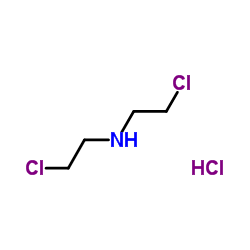
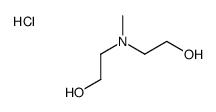
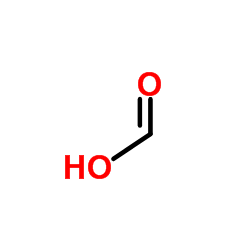

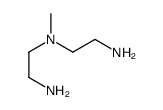




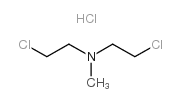
![1-[4-(3-hydroxyphenyl)-1-methylpiperidin-4-yl]propan-1-one structure](https://image.chemsrc.com/caspic/207/469-79-4.png)
![2-[methyl(2-sulfanylethyl)amino]ethanethiol structure](https://image.chemsrc.com/caspic/421/19031-92-6.png)
